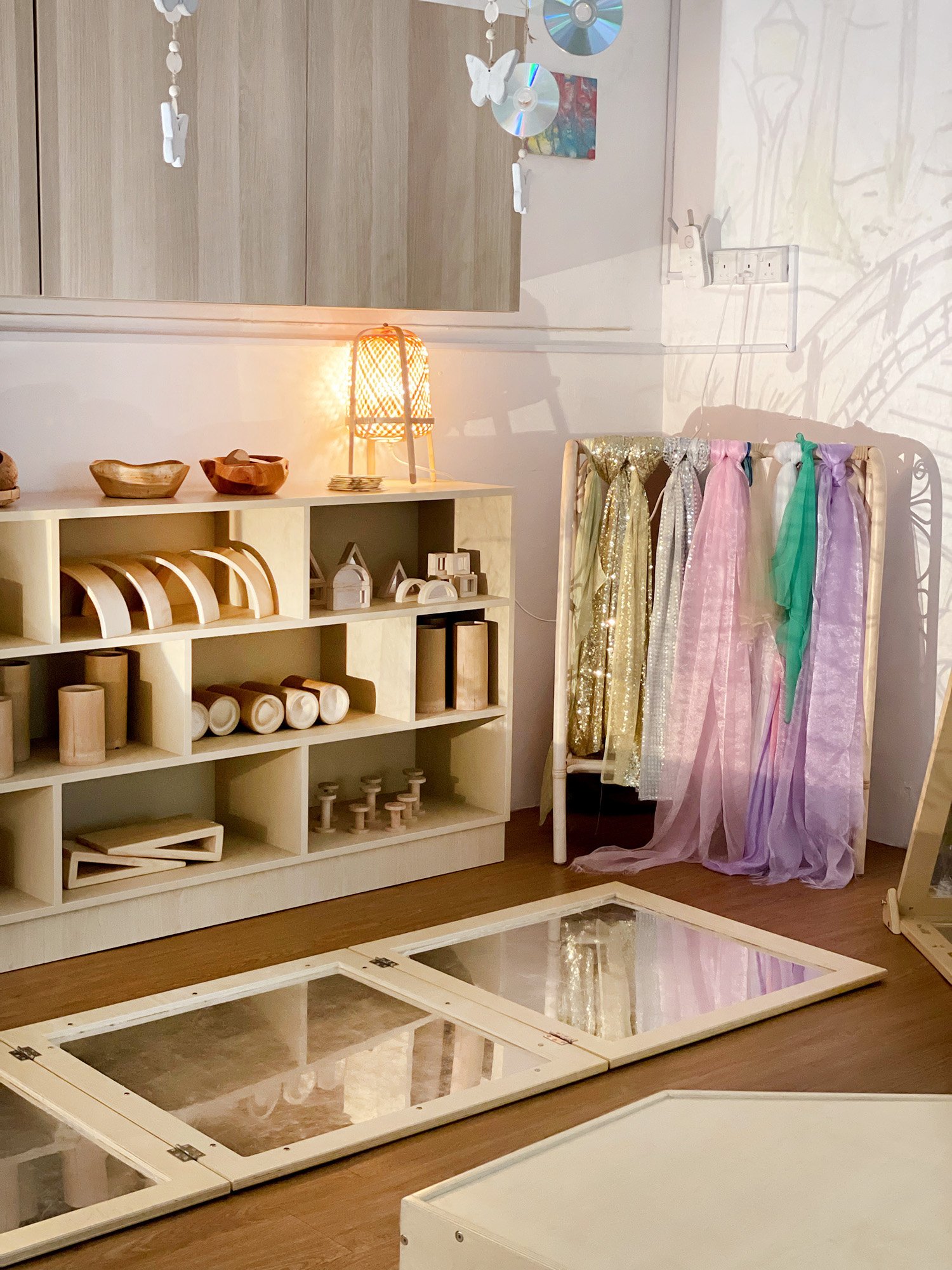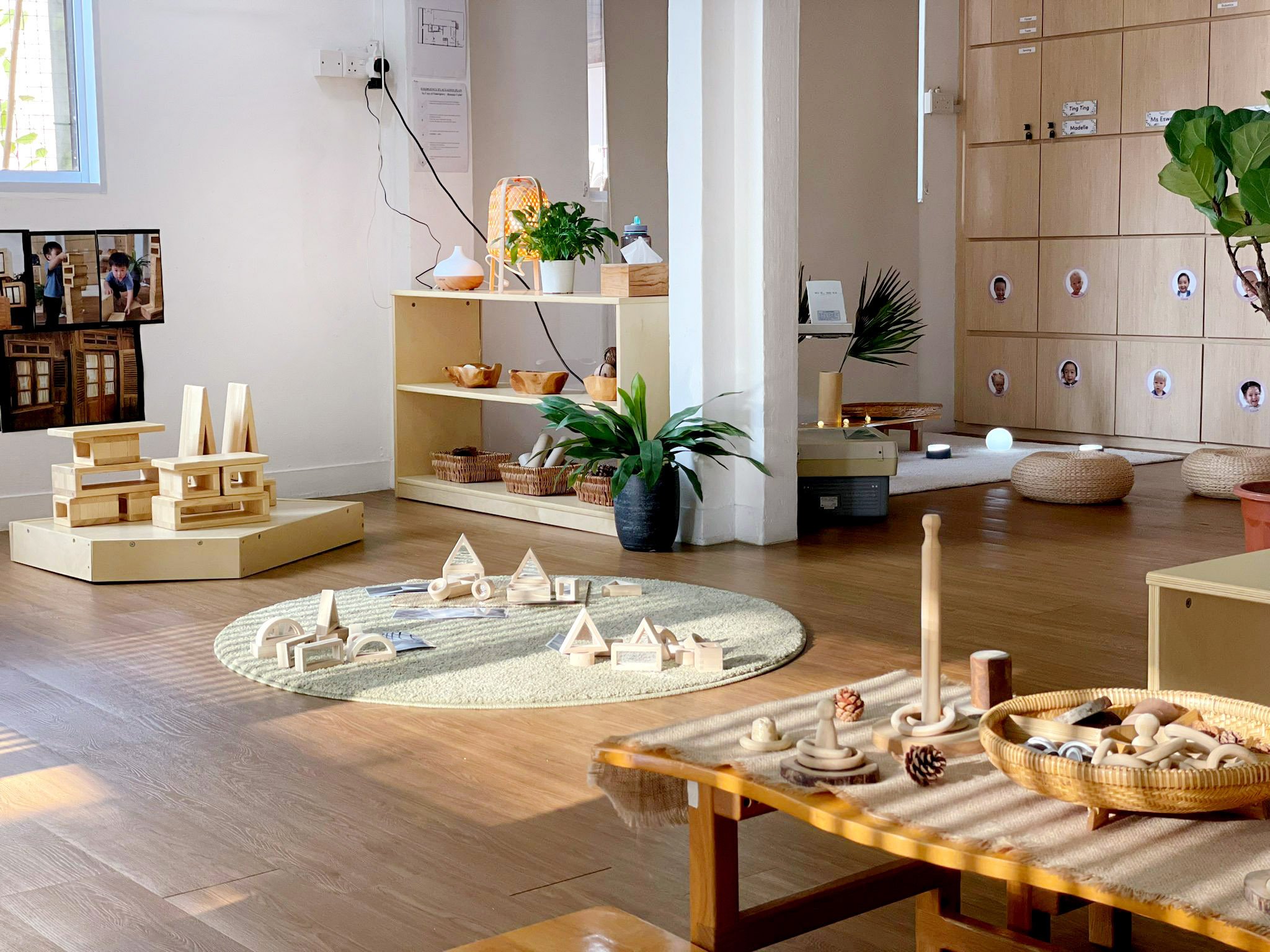Nurturing Curiosity in Toddlers through an Enriching Environment
Creating an environment that nurtures curiosity and wonder in young children is essential for their development and growth. For toddlers aged 18 months to 3 years old, this means creating a space that is both safe and stimulating, and that encourages exploration and discovery. Here are some tips for creating a wonder-filled environment for toddlers, incorporating the use of simple natural materials, recycled materials, and muted tones:
Encourage exploration with natural materials. Use simple, natural materials such as wood, stones, shells, and leaves to create a sense of wonder and curiosity. These materials are not only visually interesting, but they also have different textures and temperatures which can add an extra layer of sensory exploration for the child.
Use recycled materials in creative ways. Incorporating recycled materials into your child's environment can be a great way to spark their curiosity and encourage them to think about the world around them. For example, using old cardboard boxes to create a play fort, or using plastic bottles to make a sensory bin.
Create a neutral color palette. Using muted tones and neutral colors in your child's environment can help to create a calm and soothing atmosphere, which is conducive to exploration and discovery.
Provide open-ended toys and materials. Open-ended toys and materials, such as blocks, wooden blocks, and art supplies, allow children to explore and use their imagination, they can be used in various ways and have no specific outcome, this way the child can have an open-ended exploration with the materials.
Create a cozy and comfortable space. Creating a cozy and comfortable space is key to fostering a sense of wonder and curiosity. Soft lighting, comfortable seating, and plenty of pillows and blankets can help to create a warm and inviting atmosphere that encourages children to explore and play.
Offer low-lying and accessible storage. Toddlers are still developing their gross motor skills, and the ability to reach and grab items is still limited, providing low-lying and accessible storage options for toys, books, and other materials will allow them to access and explore items independently.
Creating an environment that fosters curiosity and wonder in young children is an ongoing process, and it's important to be flexible and responsive to their changing needs and interests. By incorporating simple natural materials, recycled materials, and muted tones, you can create a wonder-filled environment that encourages exploration and discovery, and that supports the healthy development of young children.



